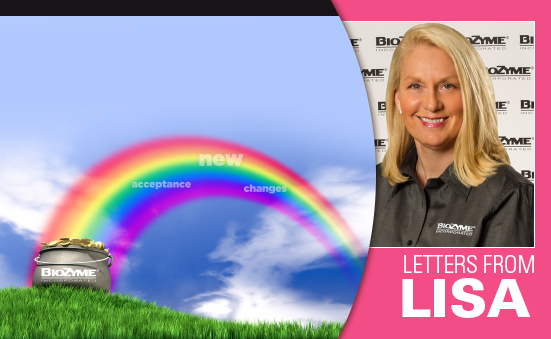It seems a bit awkward to be writing about NEW stuff with COVID-19 ruling our lives, but it certainly has forced us to love the word, so maybe it is appropriate. When I Googled ‘dealing with NEW stuff’ the results included these topics: the new normal, new technology, a new boss and having a new baby. Quite a list. One phrase on that list would not even have been there just three months ago. This is a perfect segway into that word NEW and how we can look at it if we choose to do so.
NEW just by its nature means change. So, for anything NEW, we have a choice. We can control it or escape it. Knowing you can’t ultimately escape, one will go through phases of a response to the NEW, which “should” end in acceptance. Acceptance that could lead you to a pot of gold. The belief in that pot of gold as the best option, has been ingrained in me since I was born. With that pot of gold picture in your head, one can embrace change and never go through the normal other responses to change which are shock, fear and forced adjustment. Instead the change embracing person goes straight to acceptance and begins building on the NEW.
It is in that vein that BioZyme® has launched the NEW product line VitaFerm® Conserve™, is investigating a NEW packaging option for mineral that is not a bag (yes you read that correctly), is moving to a larger state of the art facility for all small pack products and is looking toward partnerships that have never existed before, due to being viewed as competition, to ensure we have the best products on the market for the animal and the expectations we place on them to CHANGE all the time without giving them any time to go through the normal four stages of change.
Why is all this NEW exciting?
Because done right, it leads to a pot of gold. Not only a pot that helps grow our dealers’ business, but a most important pot that supports the animal, so they get consistent, effective nutrition allowing them to maximize their genetic potential. With all this NEW swirling around it is easy to forget those things that will always remain the same and for which we should be thankful: Our appreciation for your continued support. Support in good times and in not so good, during struggles and during victories. It means the world to us.
This quote by Henry Ward Beecher says it best, “The head learns new things, but the heart forever practices old experiences.” Thanks for your heart and how you so graciously share it with us!










